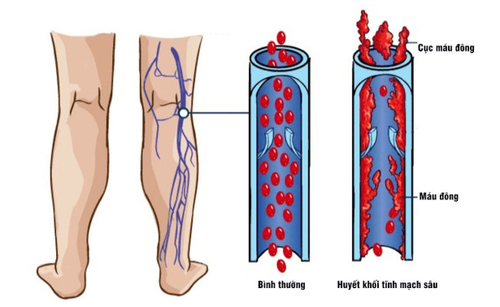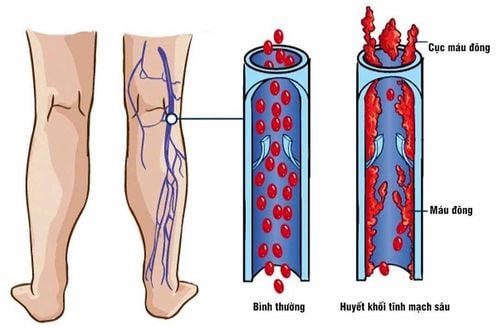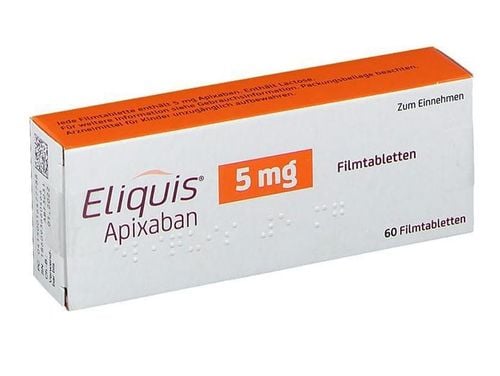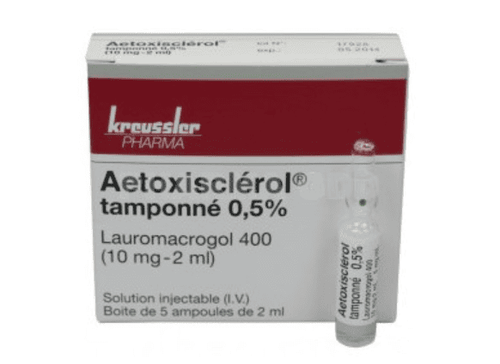This is an automatically translated article.
The article is professionally consulted by Cardiologist - Department of Examination & Internal Medicine - Vinmec Phu Quoc International General Hospital.Deep vein thrombosis is a relatively common disease, dangerous cases can lead to pulmonary embolism complications, threatening the patient's life. Let's learn the methods to prevent deep vein thrombosis in each different case in the following article.
1. What is deep vein thrombosis?
Deep Vein Thrombosis (DVT) is a condition in which blood clots (thrombosis) form in the deep veins of the legs or other areas of the body.Veins are blood vessels responsible for transporting blood from tissues and relationships to the heart. Deep veins are veins located deep in the body, away from the surface of the skin.
2. Formation of venous thrombosis
Blood clotting is a normal body process that helps stop bleeding after an injury, such as a cut in the skin. A blood clot in a vein can form under the following conditions:
Blood flow is too slow The lining of the vein is damaged Disturbance in the blood, making it easier for blood to clot. When a blood clot forms in a deep vein, blood circulation is slowed, the volume of blood in the vein increases, causing the vein to swell. If a piece of the clot breaks off and travels through the blood vessels to the lungs, it can be very dangerous. This condition is called a pulmonary embolism, which can be fatal. Nearly one-third of people with deep vein thrombosis develop a pulmonary embolism. Therefore, it is imperative to screen, detect and treat deep vein thrombosis in time to prevent pulmonary embolism from occurring.

Sự hình thành cục máu đông trong tĩnh mạch
3. Subjects at risk of deep vein thrombosis
Deep vein thrombosis can happen to anyone, but some of the following risk factors increase your chances of developing it, including:
Before and after surgery Trauma Trauma Long periods of inactivity ( bed rest, sitting, long car or plane ride) Cancer and cancer therapy History of venous thromboembolism Advanced age During pregnancy and 4-6 weeks postpartum History Using estrogen-containing birth control methods or hormone therapy to treat menopausal symptoms Certain medical conditions, including heart failure, inflammatory bowel disease, and some kidney diseases Obesity Smoking habits Varicose veins Intubation in the main vein (a therapy for long-term direct release of drug into the bloodstream) Thrombosis due to a clotting disorder.
4. Prevent DVT from happening before and after surgery
Surgery can cause deep vein thrombosis. As a precaution, your doctor will use medications to inhibit blood clot formation before or after surgery. In addition, patients need to stop taking certain medications before the day of surgery.
At the hospital, before surgery, the patient can wear medical socks or inflatable shoes to prevent blood clots from forming in the legs. These devices will tighten muscles to promote blood circulation. Patients usually have to wear them throughout the surgery until they are discharged from the hospital. In addition, patients are often encouraged to get up and walk after surgery. In addition, the patient's feet or the foot of the bed can be raised to relieve blood pressure in the legs.
5. Prevention of DVT during pregnancy
If you are pregnant, your doctor will prescribe medication or another treatment to prevent the possibility of DVT if you have the following risk factors:
Family history of the disease DVT Inherited coagulopathy Requires bed rest for long periods of time Likely to have a cesarean section.
6. Avoid DVT while traveling
For high-risk individuals, when traveling or working for a long time, it is necessary to prevent deep vein thrombosis with the following recommendations:
Drink plenty of water Wear loose clothing Prioritize going Walk and stretch your legs as often as possible (for example, when traveling by car, stop often and go outside for a few strides). Wear medical stockings that prevent varicose veins, which help prevent blood clots from forming in the legs. However, talk to your doctor about this method, as some people should not wear medical stockings (for example, people with diabetes or blood circulation problems).

Vớ y khoa ngăn chặn sự hình thành huyết khối tĩnh mạch sâu
7. Recognize the signs of deep vein thrombosis
Only about half of patients with deep vein thrombosis present with symptoms. Symptoms usually appear on the ankles, calves, or thighs, and include:
Swelling in the legs or along the blood vessels Pain in the legs when standing or walking Feeling of heat in the swollen area, pain Skin bruised red.
8. Diagnosis of deep vein thrombosis
The following tests are used to diagnose DVT:
Blood tests: To check for blood disorders. Doppler ultrasound: A hand-held device that uses sound waves to check blood flow. Nuclear magnetic resonance imaging (MRI): Shows blood clots in the legs or pelvis. Angiography (Venogram): An X-ray of the vein with dye. The dye can show the existence of a blood clot in the vein. Other tests may be done if a blood clot is suspected to be in the lungs:
Computed tomography (CT Scan): To determine if a blood clot has traveled to the lungs. Ventilation-perfusion (V/Q) test: Measures air volume and blood flow through the lungs to diagnose pulmonary embolism.
9. Treatment of deep vein thrombosis
Deep vein thrombosis is treated with medication, most commonly an anticoagulant to prevent blood clots, or a clot-busting drug.Hope the above information has helped readers better understand the causes and measures to prevent deep vein thrombosis in many different cases in life.
Please dial HOTLINE for more information or register for an appointment HERE. Download MyVinmec app to make appointments faster and to manage your bookings easily.
Reference source: Acog.org.












